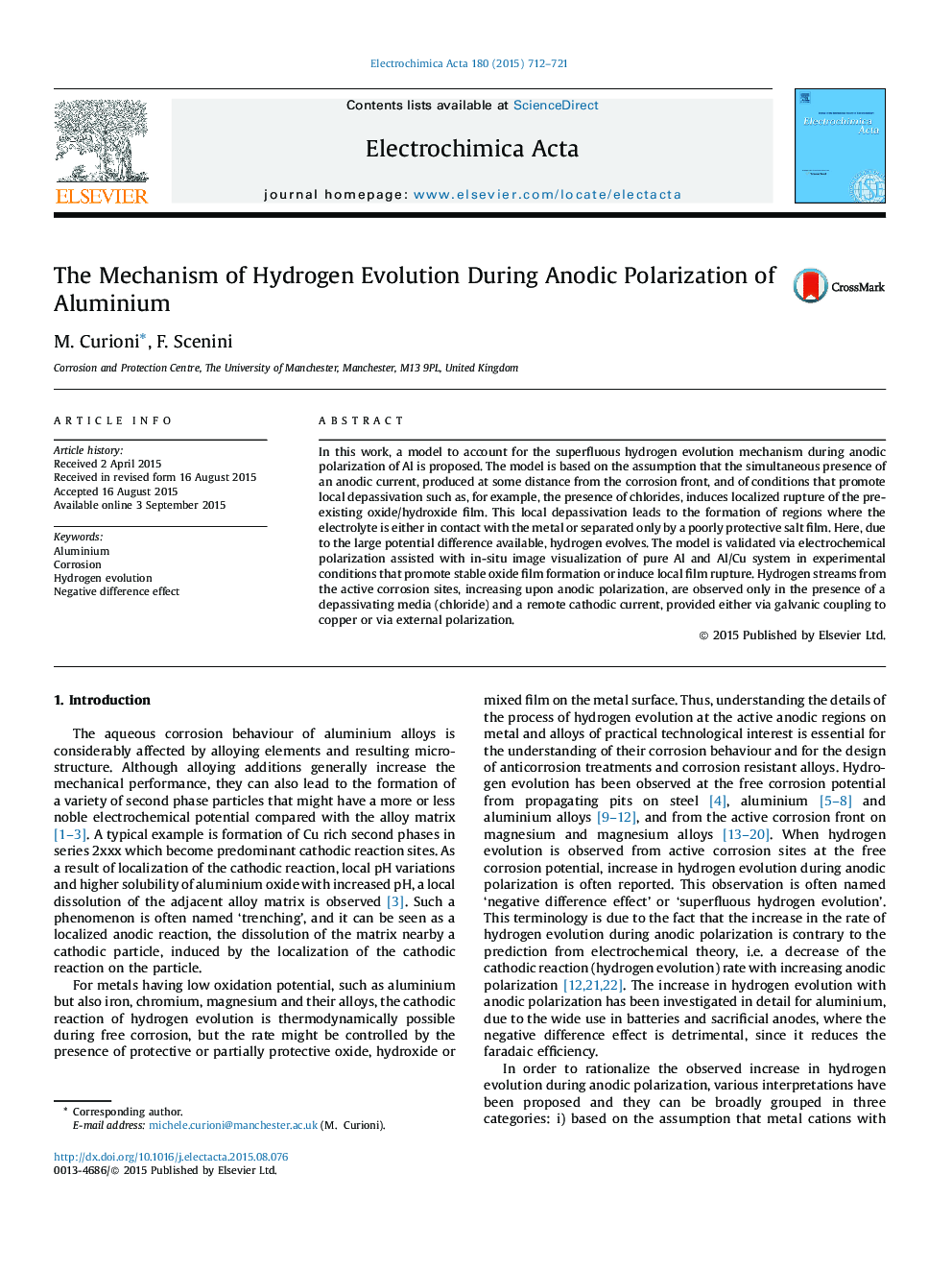| Article ID | Journal | Published Year | Pages | File Type |
|---|---|---|---|---|
| 6610493 | Electrochimica Acta | 2015 | 10 Pages |
Abstract
In this work, a model to account for the superfluous hydrogen evolution mechanism during anodic polarization of Al is proposed. The model is based on the assumption that the simultaneous presence of an anodic current, produced at some distance from the corrosion front, and of conditions that promote local depassivation such as, for example, the presence of chlorides, induces localized rupture of the pre-existing oxide/hydroxide film. This local depassivation leads to the formation of regions where the electrolyte is either in contact with the metal or separated only by a poorly protective salt film. Here, due to the large potential difference available, hydrogen evolves. The model is validated via electrochemical polarization assisted with in-situ image visualization of pure Al and Al/Cu system in experimental conditions that promote stable oxide film formation or induce local film rupture. Hydrogen streams from the active corrosion sites, increasing upon anodic polarization, are observed only in the presence of a depassivating media (chloride) and a remote cathodic current, provided either via galvanic coupling to copper or via external polarization.
Related Topics
Physical Sciences and Engineering
Chemical Engineering
Chemical Engineering (General)
Authors
M. Curioni, F. Scenini,
